Ever wondered how to step off the grid and embrace a life of self-reliance? It’s easier and more rewarding than you might think. With the right approach and a dash of ingenuity, you can harness renewable energy, collect and purify water, grow your own food, build with natural materials, and foster a thriving off-grid community. This lifestyle isn’t just about survival, it’s about thriving in harmony with nature.
- Learn how to harness the power of the sun with low-cost DIY solar power setups.
- Discover how to collect, purify, and store water for off-grid living.
- Explore feral gardening and permaculture for a secure, self-sustaining food source.
- Understand how alternative building materials like earthbags, cob, and straw bales can create robust, eco-friendly homes.
- Embrace frugal living strategies like bartering, swapping, and sharing to create a resilient off-grid economy.
Low-Cost DIY Solar Power Setups for Off-Grid Living
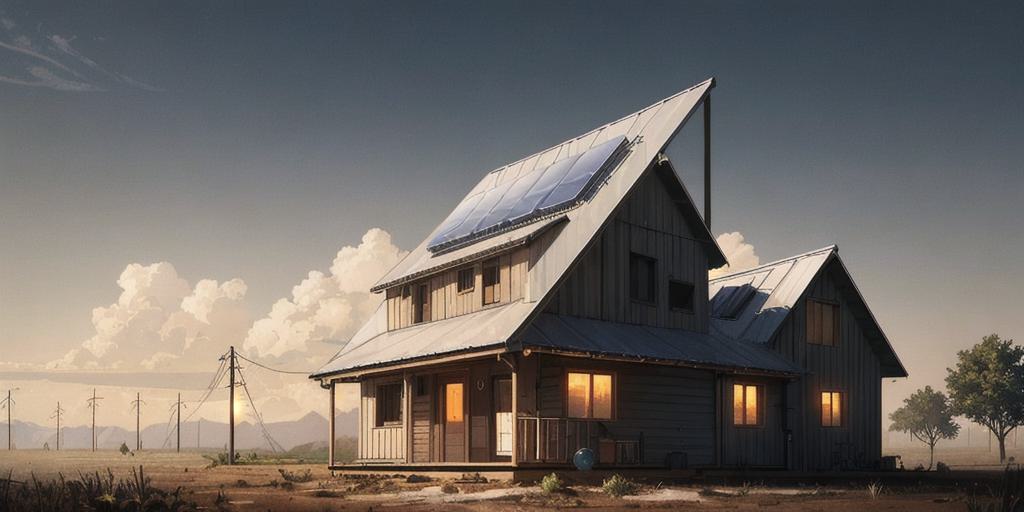
Embracing Solar Power: The Cost-Saving, Planet-Loving Choice
Imagine a world where your energy bill is not a source of dread, but a source of delight. A world where the same sun that lights up your day also powers your home. This might sound like a pipe dream, but it’s not. Self-powered homes are becoming increasingly common, thanks to the wonders of solar power.
Creating Your Own Solar Power System
Going off-grid with solar power doesn’t require an engineering degree or a fat wallet, but a spirit of experimentation and a willingness to learn. Creating your own solar power system can be a simple and inexpensive task, and it reaps many benefits. For as little as $200, you can set up a system that significantly reduces your electricity bill, or even eliminates it completely. The joy of saying goodbye to monthly payments to the electric company is priceless, and with solar power, it’s entirely achievable. Take a look at some of the advantages and disadvantages of homemade solar panels to get a better understanding of using solar panels for energy.
Choosing the Right Battery for Your Solar Panels
Your solar power system is only as good as the battery that stores the energy it produces. There are several types of batteries available, including flooded lead-acid (FLA) batteries, sealed lead-acid batteries, and lithium batteries. Each type has its own pros and cons, and the best choice for you depends on your specific needs and circumstances. FLA batteries, for example, are inexpensive and have been used for off-grid solar setups for 150 years. Lithium batteries, on the other hand, are more expensive but offer more efficient power consumption and a deeper discharge capacity. Here is a guide to help you choose the best battery for your solar panels.
Living a life powered by the sun is not just about saving money or reducing your carbon footprint. It’s about embracing a way of life that’s more in tune with the rhythms of nature. It’s about being a producer, not just a consumer. It’s about gaining a sense of self-reliance and freedom that no amount of money can buy.
Water Collection and Purification Methods for Off-Grid Living
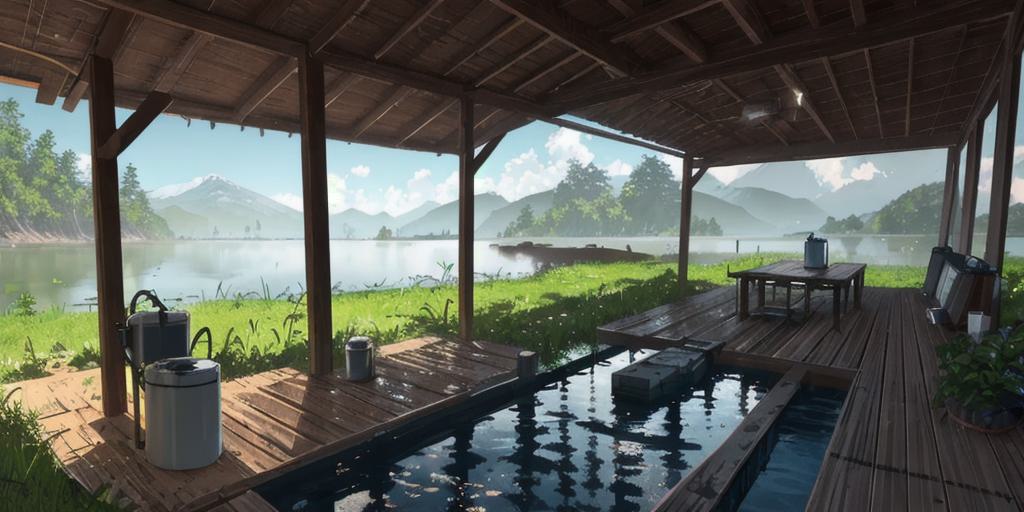
Harvesting Water: The Off-Grid Lifeblood
Water, the elixir of life, is a non-negotiable necessity when choosing to live off the grid. Mother nature is generous with her water supply, but it’s up to us to seize the opportunity. Rainwater harvesting systems are a fundamental piece of the off-grid puzzle. The beauty of these systems is that they can be as simple or complex as required, ranging from basic barrels under a downspout to extensive underground cisterns. The magic happens when the sky opens up, sending life-sustaining water your way, ready to be caught, stored, and used on your terms. Explore more about these systems in this comprehensive guide.
Purifying Water: Ensuring Safety and Health
Once you’ve captured nature’s gift, the next step is purification. Off-grid living requires us to be our own water treatment plant. Multiple methods exist to ensure your water is safe for consumption, from boiling and filtration to chemical treatment and ultraviolet light. Just like selecting a suit, one size doesn’t fit all. Your method will depend on your specific circumstances and resources. The goal is to transform your harvested water into a safe, drinkable resource. This article provides a detailed explanation of how to build your own water purification systems.
Storing Water: Creating Your Off-Grid Oasis
Storage is the final frontier in your water system. It’s your personal water ‘battery’, holding the precious resource until needed. From simple rain barrels to expansive underground tanks, storage solutions are diverse. The critical factor is to ensure your system can hold enough water to meet your needs, even in times of scarcity. Remember, this isn’t just about survival; it’s about creating a self-sustaining oasis that offers you freedom from dependence on public utilities. This book offers a plethora of insights into water harvesting, treatment, and storage.
Embracing an off-grid lifestyle is not merely about disconnecting from public utilities. It’s a journey of self-reliance and resilience, a testament to human ingenuity and adaptability. It’s a profound statement about living in harmony with nature, about being a producer and not just a consumer. So, as you venture into the world of off-grid living, remember to celebrate each raindrop and every sip of water. They’re not just life-sustaining resources; they’re symbols of your freedom, autonomy, and harmony with the natural world.
Growing Your Own Food Without Money: Feral Gardening and Permaculture

Feral Gardening: The Unconventional Route to Food Security
Our journey to a self-sustainable lifestyle begins with a shift in perspective. When we talk about growing our own food, it’s not about meticulously manicured rows of vegetables, but rather an embrace of the untamed. Not unlike the Victory Gardens of yore, it’s about harnessing the resilience of nature, in all its wild and often unruly glory. It’s about feral gardening.
Feral gardening, at its core, is about allowing nature to take the lead. It’s about sowing seeds and letting them grow wild, about embracing diversity and unpredictability in your garden. It’s about understanding that each plant has its own unique rhythm, and aligning ourselves with these natural cycles rather than trying to control them.
The Power of Permaculture: Eco-Friendly Food Production
Permaculture, a term coined from “permanent agriculture”, is a design system for creating sustainable human habitats by following nature’s patterns. It’s an approach that encourages us to work with nature, not against it. It’s about understanding that our food doesn’t have to come at the expense of the planet, but can instead contribute to its regeneration.
Permaculture promotes diversity and resilience, traits that are of utmost importance when living off the grid. Whether you’re dealing with a wild hog invasion or a seasonal drought, a permaculture garden is designed to withstand challenges and thrive in spite of them.
Building Your Food Forest: A Step-by-Step Guide
So how does one go about building a food forest from scratch? The first step is to observe. Spend some time on your land, get to know its quirks and patterns. What areas get the most sunlight? Where does the water collect after a rain? Which plants are already thriving there? These observations will guide your design process.
Next, start small. Choose a handful of easy-to-grow plants and focus on them. As you get more comfortable, you can gradually expand your garden and introduce more variety. And remember, this is not a race. The journey towards self-sustainability is a marathon, not a sprint.
Lastly, have patience. Remember, nature operates on her own timeline. It may take a season or two for your plants to really start flourishing. But once they do, you’ll have a self-sustaining food forest that provides not only nourishment but also a profound sense of accomplishment. After all, there’s nothing quite like the taste of a meal you’ve grown and harvested yourself.
Natural Building Materials for Off-Grid Homes: Earthbags, Cob, and Straw Bales

Embracing Earth as Your Architect: Earthbags, Cob, and more
As we continue our journey towards sustainable living, we come across an undeniable truth: Earth is an architect. A grand designer of enduring structures, Earth has been fashioning homes for countless species for millions of years. Why not draw inspiration from the master builder herself when creating our off-grid homes?
From the dome-shaped earth bag houses in Colombia to the rammed-earth homes in the Colorado Plateau, people are harnessing the power of natural building materials to create sustainable, energy-efficient homes. But how do we begin our own exploration into these materials? Let’s delve into the world of earthbags, cob, and straw bales.
Earthbags: Building Blocks of the Earth
Imagine sandbags, but filled with subsoil instead of sand. That’s an earthbag in a nutshell. Earthbag building is a technique that uses bags or tubes filled with earth to create walls, domes, and vaults. Simple, affordable, and highly resilient, earthbag structures are perfect for those who want to literally build their off-grid dreams from the ground up.
The beauty of earthbags lies in their versatility. You can shape them to form organic curves or stack them to create straight walls. Whether you’re envisioning a quaint cottage or a spacious dome, earthbags can bring your vision to life. Moreover, these structures are known for their ability to withstand natural disasters, making them an excellent choice for off-grid living.
Cob: The Ancient Art of Building with Earth
If earthbags are the building blocks, cob is the sculptor’s clay. A mixture of earth, sand, and straw, cob has been used as a building material for thousands of years. This age-old technique allows you to shape your home with your own hands, literally.
Cob homes are sturdy, breathable, and naturally insulated. They can keep you cool during the day and warm during the night, reducing your reliance on artificial heating and cooling systems. Furthermore, cob is a resource that’s abundant and free. All you need is a plot of land and the willingness to get your hands dirty.
Straw Bales: Insulation and Structure Rolled into One
Imagine a material that’s renewable, affordable, and offers excellent insulation. That’s straw for you. Straw bale construction involves stacking bales of straw to create walls that are then covered with plaster. The result is a home that’s warm, cozy, and exudes a rustic charm.
Straw bale homes are not just eco-friendly, but they’re also energy-efficient. The thick straw walls provide excellent insulation, helping to keep the interior temperature stable regardless of the weather outside. This means less reliance on heating and cooling systems, leading to lower energy consumption and costs.
Earthbags, cob, and straw bales are different paths to the same destination: a sustainable, off-grid lifestyle that respects and embraces nature. As we venture further into this journey, let’s remember to draw inspiration from the greatest architect of all: Earth herself.
Frugal Living Strategies for Off-Grid Living: Bartering, Swapping, and Sharing
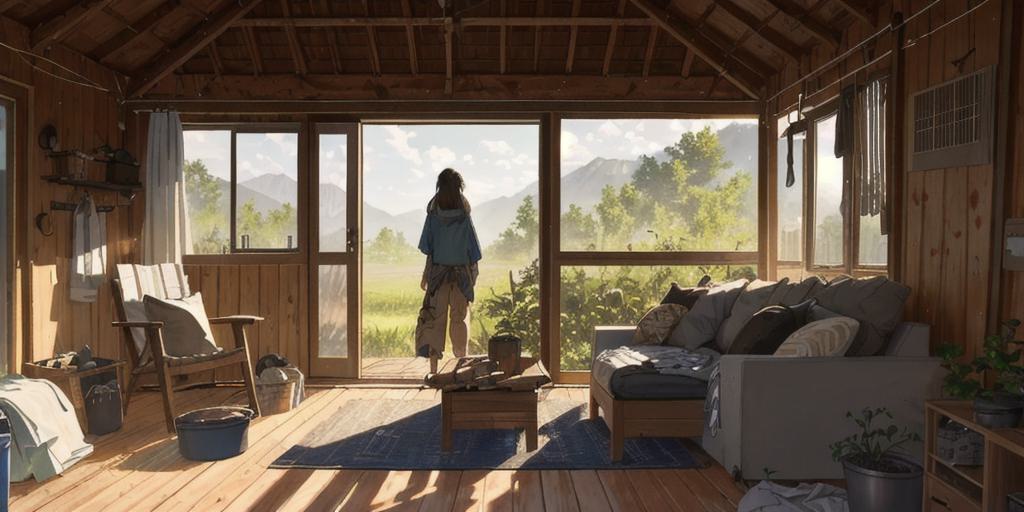
Trading: The Economy of Shared Prosperity
Embarking on an off-grid lifestyle doesn’t just mean disconnecting from the power grid. It’s also about disconnecting from the monetary system as much as possible. But, how can we get what we need without money? Trade is the answer. In its simplest form, trading is an exchange of goods or services. But, it’s also a way to establish relationships, build community, and foster shared prosperity.
Imagine a simple exchange: you give a basket of tomatoes from your garden to your neighbor, and in return, they fix the leaky faucet in your kitchen. This is trade in action. It’s not just about the goods or services exchanged, but also about the relationships that are built and strengthened. In an off-grid community, trade is the lifeblood that supports mutual survival and prosperity.
Swapping: Maximizing Resources Through Exchange
Swapping is a form of trading that focuses on exchanging items. It’s a way to get what you need without spending money and without creating unnecessary waste. The saying “one person’s trash is another person’s treasure” rings true in a swapping economy.
From clothing swap parties to book exchange clubs, swapping is an effective way to maximize resources and minimize waste. It’s not just about getting something new to you, it’s also about giving a second life to items that would otherwise end up in a landfill. Swapping is a win-win situation: you get what you need, and you help the planet at the same time.
Sharing: Building a Culture of Generosity
Sharing is not just a good deed, it’s a way of life in an off-grid community. It’s about pooling resources and dividing chores to ensure everyone’s needs are met. Sharing is about taking care of each other and the environment.
From shared gardens that provide food for the community, to shared tools that everyone can use, sharing is a way to maximize resources and minimize waste. It’s not just about reducing consumption, it’s also about building a culture of generosity and mutual support. In an off-grid lifestyle, sharing isn’t just a strategy, it’s a philosophy that permeates every aspect of life.
As we venture further into the world of off-grid living, we will continue to explore different strategies and philosophies that can help us live a more sustainable and fulfilling life. From trading, swapping, and sharing, we are redefining what it means to be rich. It’s not about how much money we have, but about the quality of our relationships, the richness of our experiences, and the depth of our connection with nature.
Off-Grid Communication Methods: Ham Radio and Other Alternative Communication Options
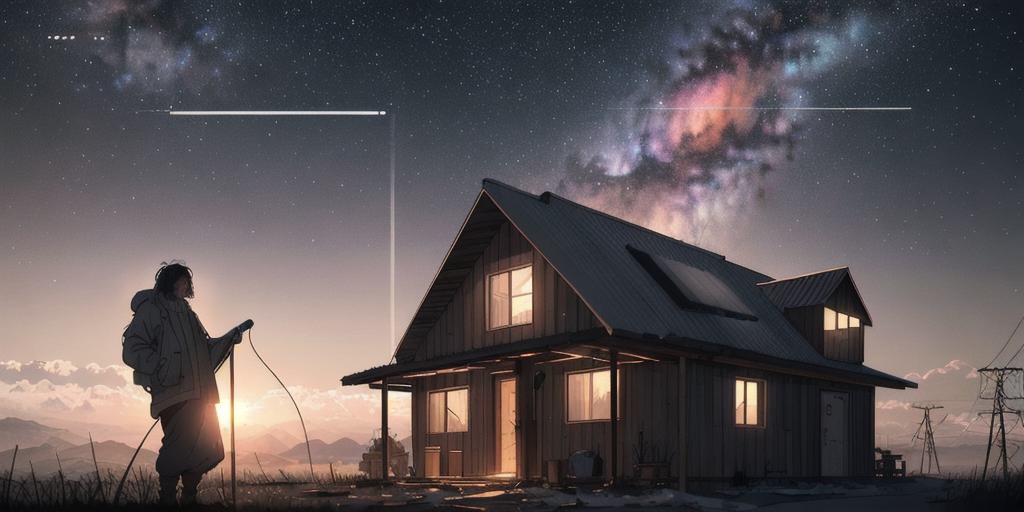
The Art of Ham Radio Communication
Ham radio, or amateur radio, offers an intriguing, cost-effective solution to off-grid communication needs. Unlike conventional telecommunication channels, ham radio is not dependent on the infrastructure of cell towers or internet cables. This technique of communication has stood the test of time and can be a lifeline in emergency situations when traditional communication networks fail.
Ham radios operate on a variety of frequencies, and with the right equipment and know-how, can reach across continents, into space, and even bounce signals off the moon! But it’s not just about the distance. It’s the opportunity for human connection that makes ham radio a compelling choice for off-grid communication.
Operating a ham radio does require a license, but the process is part of the journey. Learning about the technical aspects of radio communication not only equips you with a valuable skill, but it also opens up a community of like-minded enthusiasts.
The Digital Bridge: Harnessing Satellite Technology
While ham radios offer a robust solution for off-grid communication, they may not always be the most convenient or efficient choice, especially in today’s digital age. Enter the realm of satellite phones. Offering a global reach and the ability to work in virtually any environment, satellite phones can be a lifeline when you’re off the grid.
These devices offer basic forms of internet access, enabling you to send emails, browse information, and transmit reports back to a home base. The connection speeds may be slow, but the ability to access the internet in the middle of nowhere can be invaluable in an emergency or simply for the purpose of staying connected.
Keep in mind, this type of communication comes with a cost. However, the peace of mind and functionality a satellite phone provides can be well worth the investment. Consider it as not just a gadget, but a gateway to the world when you’re living off-grid.
The Power of Redundancy: GPS-Enabled Communication Devices
In the realm of off-grid living and survival, redundancy is not a bad thing; it’s a lifeline. GPS-enabled communication devices not only provide the ability to communicate but also offer an essential navigation aid. These devices are different from your typical GPS system found in cars or smartphones. Instead of providing turn-by-turn navigation, they offer latitude and longitude grid-coordinates.
With a good map and compass, this information can be sufficient to help you navigate your way out of a challenging situation or regain your bearings if you become lost. The added cost for a GPS-enabled unit can be a small price to pay for the peace of mind it provides.
Remember, while ham radios, satellite phones, and GPS-enabled devices each have their strengths and weaknesses, their value lies in how effectively you use them. It’s not just about acquiring the gadgets; it’s about mastering their use, understanding their limitations, and integrating them into your overall off-grid lifestyle. As you equip yourself with these tools and skills, you are not just preparing for emergencies; you are embracing a lifestyle of resilience, self-reliance, and deep connection with the world around you.
Living Without Electricity: How to Use Nature’s Rhythms to Tell Time and Light Your Home
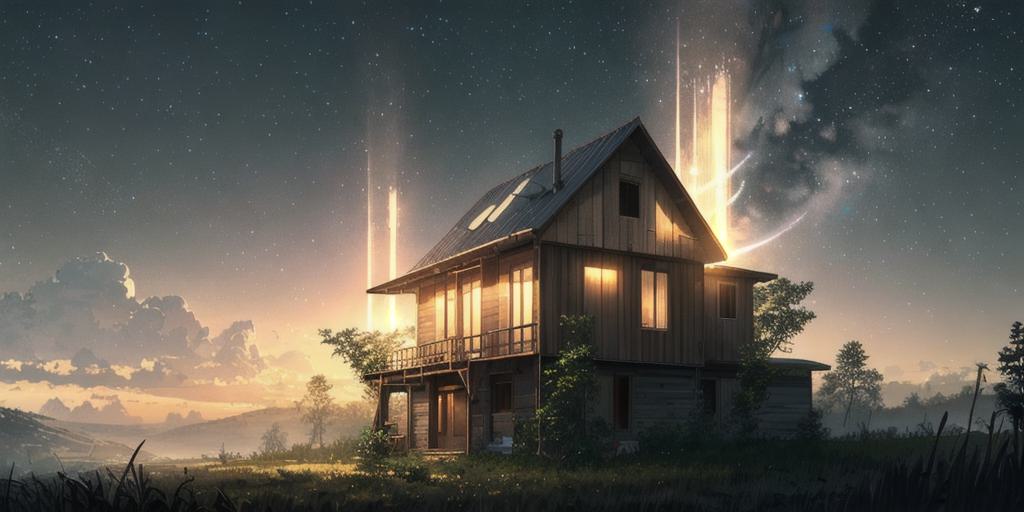
Embracing the Natural Clock: Nature as Your Timepiece
One of the first challenges in transitioning to a life off-grid is the disconnection from conventional timekeeping. Without the incessant ticking of wall clocks or the glaring digits of a smartphone, how does one keep track of time? The answer is simpler than you might think.
Nature, in its infinite wisdom, has a rhythm all its own and it’s been keeping time long before we invented clocks. The sun rises and sets, the moon waxes and wanes, the seasons change, and these cycles can all be used to mark the passage of time. By paying close attention to the nuances of nature’s daily and seasonal cycles, you can develop a sense of natural timekeeping that is deeply connected to the rhythms of the world around you.
This isn’t just a practical skill, but a deeply enriching experience that can heighten your awareness and appreciation of the intricacies of the natural world. It’s about more than just knowing what time it is; it’s about tuning into the subtle shifts and changes in the environment and becoming an active participant in the ebb and flow of life’s rhythms.
Lighting Your World: Harnessing the Power of Fire and Sunlight
Living off the grid doesn’t mean living in darkness. Fire, mankind’s oldest ally, is a readily available source of light that requires little more than wood and a spark. Not only does a well-maintained fire provide light, but it also offers warmth, a means for cooking, and a focal point for socializing. The flickering light and comforting heat of a fire can create a cozy and inviting atmosphere that electric lighting simply cannot match.
Of course, fire isn’t the only source of natural light. The sun, our most abundant and renewable energy source, provides ample light during the day. By building and positioning your off-grid home to maximize sun exposure, you can ensure you have plenty of natural light during the day. This can be as simple as having large, south-facing windows, or as complex as incorporating solar tubes and reflective materials into your home design.
It’s also worth considering solar-powered lights for those times when you need light but don’t want to build a fire. Solar lights can be charged during the day and provide several hours of illumination after dark. They are a perfect example of how modern technology can be harnessed to enhance off-grid living.
Creating a Sustainable Cycle: Living in Harmony with Nature’s Rhythms
Living off-grid with no money requires a shift in mindset from consumption to sustainability. This means living in a way that works with, rather than against, the natural rhythms of the earth. The sun, the seasons, the flow of water — all of these can be harnessed to create a lifestyle that is not only sustainable, but deeply rewarding.
From using a sundial or observing animal behavior to tell time, to strategically using fire and sunlight for illumination, these practices can help you align your lifestyle with the rhythms of nature. It’s not just about survival; it’s about thriving in harmony with the world around you.
Remember, living off-grid is more than a series of practical decisions and strategies; it’s a philosophy, a way of life. It’s about choosing to forge your own path, to live in a way that is not dictated by societal norms or expectations. It’s about finding freedom in simplicity, and discovering that the most valuable things in life aren’t things at all.
Building a Off-Grid Community: Share Resources, Knowledge, and Support
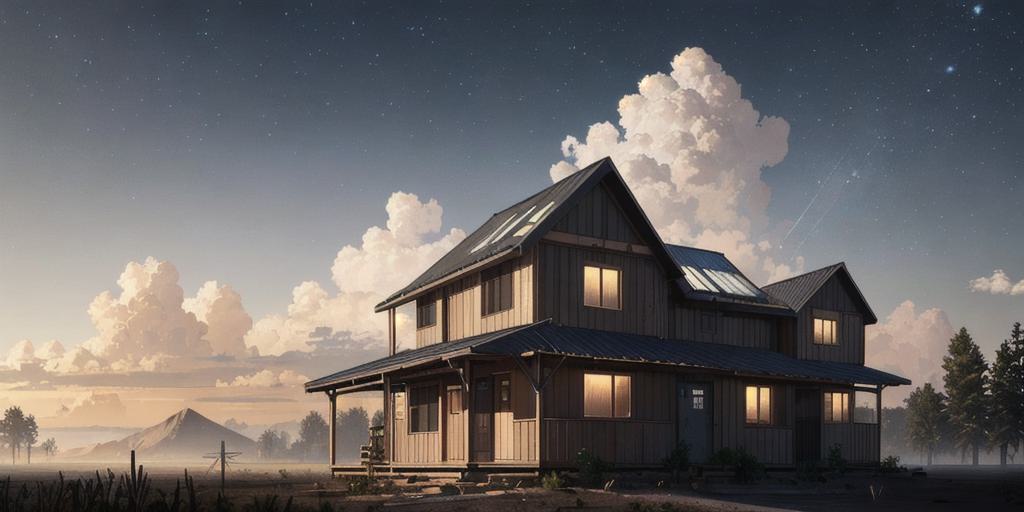
Building Networks: The Power of Off-Grid Communities
Living off the grid doesn’t mean you have to go it alone. Like the Bostonians in their urban off-grid living endeavors, establishing a community of like-minded people can be a game changer in your off-grid journey. It’s about sharing resources, knowledge, and providing each other with a support network. When you foster a sense of community, you’re creating a resilient safety net that’s invaluable when facing unexpected challenges.
Consider forming partnerships with neighbors, local businesses, and organizations. These relationships can facilitate the sharing of resources, from tools and equipment to labor and expertise. By pooling resources, you reduce costs, making your off-grid lifestyle more sustainable and efficient.
Knowledge is Power: Learning and Teaching in the Off-Grid Community
When it comes to surviving and thriving off the grid, knowledge truly is power. Whether it’s learning how to install solar panels, understanding how to harvest rainwater, or mastering the art of organic gardening, the skills you acquire can greatly enhance your off-grid lifestyle. So, why not share that knowledge?
Consider the example of the off-grid business model that emphasizes local capacity building. By teaching others, you not only empower them, but you also strengthen the overall resilience and self-sufficiency of your community. It’s a win-win situation and another testament to the power of sharing.
Creating a Supportive Ecosystem: The Role of Reciprocity in Off-Grid Living
Off-grid living is not a one-way street. It’s a cyclical process of giving and receiving, a concept deeply rooted in the rhythms of nature itself. Consider the homesteading lifestyle, where the land provides food and resources, and in return, you nourish the land through sustainable practices.
This principle of reciprocity extends to your off-grid community as well. As you share your resources and knowledge, you’ll find that others are more inclined to do the same. This creates a supportive ecosystem where everyone benefits. Whether it’s trading homegrown vegetables, swapping skills, or lending a helping hand, these reciprocal exchanges can greatly enhance the quality of your off-grid life.
In the end, building an off-grid community is all about fostering connections – with the land, with each other, and with nature’s rhythms. It’s about creating a life that is not only sustainable, but also deeply satisfying and rewarding.
Alternative Energy Sources for Off-Grid Living: Wind, Hydro, and Geothermal

Harnessing the Power of the Wind
Let’s talk about wind energy, the underdog of alternative energy sources. While it may not be as popular as solar power, the potential of wind energy is colossal and largely untapped. Akin to the way sailboats harness wind, wind turbines capture the kinetic energy of the wind and convert it into electricity. The beauty of wind power lies not only in its sustainability, but also in its scalability. From small turbines for individual homes to massive wind farms, wind power can be adapted to a multitude of scenarios.
However, keep in mind that wind power is not a plug-and-play solution. It requires a careful understanding of your local wind resources, as well as the right equipment and setup. As highlighted in the story of off-grid living in Africa, wind power may pose challenges in remote locations due to the difficulty of turbine construction and maintenance. But as we’ve seen time and time again, challenges are just opportunities in disguise.
Unleashing the Power of Water: Micro-Hydro Energy
Another alternative energy source for off-grid living is micro-hydro power. This might sound intimidatingly technical, but at its core, it’s a simple concept. Micro-hydro power involves capturing the energy of flowing or falling water to generate electricity. It’s like a miniature version of the hydroelectric power plants you see on large rivers, scaled down for individual use.
Micro-hydro power systems can provide a steady supply of energy to a remote community, offering a significant advantage over solar and wind power. As pointed out in the Berkeley blog on Africa’s leap towards off-grid solutions, the reliability of micro-hydro can be a game changer in locations with suitable water resources.
While setting up a micro-hydro system might require more initial effort compared to other renewable energy sources, the payoff can be substantial. It’s about playing the long game, investing time and resources now for a sustainable, self-sufficient future.
Delving into the Depths: Geothermal Energy
Let’s go a little deeper – literally. Beneath the surface of the Earth lies a powerful, consistent source of energy: geothermal. Geothermal energy taps into the Earth’s internal heat, harnessing it for heating, cooling, and even electricity generation. It’s like having a piece of the sun right under your feet.
While geothermal systems can be more complex to set up, they offer several unique advantages. They’re not reliant on weather conditions, making them a consistent and reliable source of energy. Moreover, according to Geothermal Energy for Off-Grid Living, geothermal heating and energy is an efficient way to heat and cool your home, potentially reducing or even eliminating your need for external fuel sources.
Living off the grid is not a step back to the Stone Age, but a leap forward into a future where we live in harmony with nature. By tapping into the power of wind, water, and the Earth itself, we can create sustainable, self-sufficient lifestyles that respect and cherish our planet’s resources. So, are you ready to embrace the power of alternative energy?
Minimalist Living: How to Live a Happy, Fulfilling Life with Only the Essentials
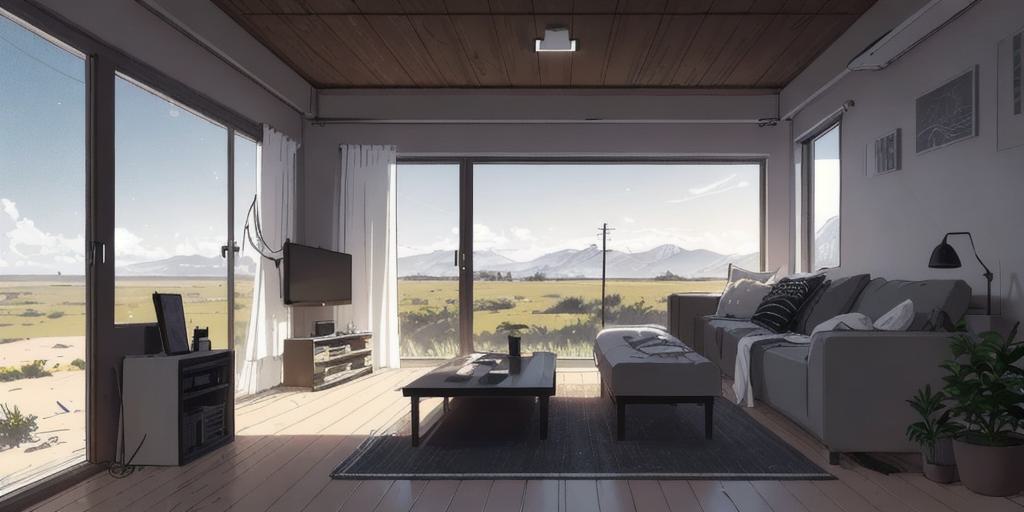
Embrace the Transformational Power of Constraints
Minimalist living is about more than just decluttering your physical space, it’s about a transformation of mindset. It’s an opportunity to reshape your thought processes and behaviors, and in doing so, mold a life that brings you joy. Imagine stuffing your life into a suitcase, reducing your belongings down to just the essentials. What would you keep? What would you discard? Most importantly, what would you learn about yourself in the process?
Like the young woman who moved to Spain with a suitcase in hand, embracing minimalism often means embracing constraints. But there is a beautiful paradox in constraints: they can be incredibly freeing. When you limit your physical possessions, you also limit the mental clutter and stress that comes with managing them. This frees up time, energy, and mental space for what truly matters. (source)
The Philosophy of Enough
Minimalism is not about deprivation, it’s about finding your own personal “enough”. It’s about recognizing the difference between wants and needs, and understanding that more does not always equate to better. In fact, sometimes, more is just… more. More stress, more to clean, more to maintain, more to distract from what truly brings joy and fulfillment.
Identifying what’s essential and what’s excess in your life requires introspection and honesty. It’s about asking hard questions: What possessions truly add value to my life? What is merely taking up space? What activities bring me joy? What is simply filling up my time? It’s about learning to say “no” to the non-essentials so you can wholeheartedly say “yes” to what truly matters. (source)
Frugality and Minimalism: Comrades in the Pursuit of a Fulfilling Life
Minimalism and frugality are often seen as comrades in arms. Both philosophies advocate for the conscious use of resources, be it time, money, or possessions – but the rationale behind them may differ. Frugality is often driven by financial necessity or the desire for financial independence. Minimalism, on the other hand, is more focused on the pursuit of a fulfilling life through intentional choices.
However, these philosophies can intersect in powerful ways. By adopting frugal habits, you can save money and minimize wastage. For instance, instead of buying bottled water, invest in a reusable water bottle. Not only will this save you money over time, but it also reduces plastic consumption – a win-win for both your wallet and the planet. (source)
Living a minimalist life does not mean renouncing all possessions and living in an empty room. It’s about embracing a mindset of intentionality, recognizing your own “enough”, and making room in your life for what truly matters. It’s about forging your own path, one that is not dictated by societal norms or external pressures, but by your own values and aspirations.
A Journey Towards Self-Reliance and Harmony with Nature
Imagine a life where you thrive in harmony with nature, harnessing the power of the sun, the wind, and the earth to sustain your off-grid lifestyle. From generating your own electricity with low-cost DIY solar power setups to building your own home using natural materials like earthbags, cob, and straw bales, the possibilities are endless and exhilarating.
This lifestyle isn’t just about survival, but about thriving. It’s about being a producer, not just a consumer. It’s about gaining a sense of self-reliance and freedom that no amount of money can buy.
Embracing an off-grid lifestyle is not merely about disconnecting from public utilities. It’s a journey of self-reliance and resilience, a testament to human ingenuity and adaptability. It’s a profound statement about living in harmony with nature, about being a producer and not just a consumer.
Whether you’re harnessing the power of the wind, exploring the potential of micro-hydro power, or delving into the depths of geothermal energy, your journey towards a sustainable, self-sufficient lifestyle is an adventure, a challenge, and a joy. Enjoy the journey, take joy in the challenges, and revel in the rewards. After all, there’s nothing quite like the satisfaction of knowing you’ve created a life that’s in harmony with the rhythms of the earth.
So, ready to step off the grid and embrace a life of self-reliance? Remember, it’s not a leap into the unknown, but rather a step towards a future where we live in harmony with nature, harnessing its power to create a sustainable, self-sufficient lifestyle.